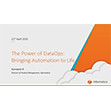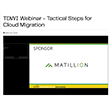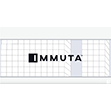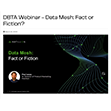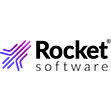

In today’s data-driven world, organizations are constantly seeking innovative solutions to extract maximum value from their data stack. However, with the rise of AI, organizations are dealing with increasingly complex data structures and models. This has made it more challenging for them to have a unified and accessible data stack that engages both technical and non-technical stakeholders.
Semantic layers help simplify the complexity by providing a foundational framework for a consistent way of interpreting and analyzing data. With semantic layers, self-service users can find and share data without needing to know how to code.
AtScale, one of the leading providers of semantic layer solutions, unveiled next-generation product innovations aimed at advancing the capabilities of its platform and ushering the industry into a new era of data-driven innovations.
 The product’s innovations were announced at the Semantic Layer Summit – a one-day virtual event that features enterprise data leaders & top industry technologists.
The product’s innovations were announced at the Semantic Layer Summit – a one-day virtual event that features enterprise data leaders & top industry technologists.
AtScale’s next-gen platform now features a Universal Semantic Hub that supports all AI and business intelligence (BI) tools. This enables teams to work with their preferred data products while having access to consistent views of live cloud data. This will help break down data silos, minimize data duplication, and increase accessibility to business-ready data.
The update also features improved collaboration capabilities with better discoverability, oversight, and reusability of semantic objects. This upgrade enables more efficient collaboration between business stakeholders. This means that business analysts, data engineers, and other stakeholders can now collaborate on semantic modeling under a unified platform.
“The semantic layer serves as a key technology enabler for delivering the best of both worlds; business-friendly, self-service analytics, but with governance and control. By supporting traditional BI teams alongside a new generation of analytics users, our ‘plug and build’ approach accelerates data-driven innovations in a unique way.” said Dave Mariani, founder and CTO, AtScale.
AtScale has also launched a free public preview version of its semantic layer platform called the Developer Community Edition, signaling a major leap in democratizing analytics. The Developer Community Edition is a free version of AtScale’s full-featured semantic layer platform and features a new modeling language called semantic modeling language (SML).
The new release also features a public GitHub repository for pre-built and reusable semantic models, allowing community members to learn, share, and innovate together. The pre-built model libraries can be used for various applications including operational efficiency in finance, advanced analytics transitions, and insights enhancement for retail organizations.
Data that is enriched with business context is significantly more valuable to an organization. The latest version of the platform features a metadata hub to simplify the process of integrating any model or approach with GenAI and LLMs within the appropriate business context.
This allows companies to give business context to both traditional AI as well as GenAI models. They can use the metadata hub to enrich their labeling and vectorization of unstructured data objects.
AtScale now offers seamless integration with dbt by adding its SML translator for dbt. Teams can use dbt semantic models to work with AtScale’s support for Excel, Tableau, Power BI, and other consumption tools. We can expect AtScale to add more integrations to its platforms, including integration with vector databases and other elements of the GenAI ecosystem.
The announcement of new product innovations and the public preview of the AtScale Developer Community Edition are an indicator of AtScale’s commitment to helping organizations create value from their data and AI investments, and to making analytics benefits accessible to all.
Related Items
AtScale Releases Keynote Lineup, Full Agenda and Registration for 2024 Semantic Layer Summit
July 30, 2025
July 29, 2025
- Git-for-data Pioneer lakeFS Secures $20M in Growth Capital, Fills a Critical Gap in Enterprise AI Tech Stack
- Esri, Microsoft, and Space42 Partner to Launch ‘Map Africa Initiative’
- Teradata Expands ModelOps in ClearScape Analytics for Generative and Agentic AI
- Linux Foundation Welcomes AGNTCY to Tackle AI Agent Fragmentation
- Deloitte: Trust Emerges as Main Barrier to Agentic AI Adoption in Finance and Accounting
- Lightbits Launches NVMe over TCP Storage for Kubernetes on Supermicro Systems, Unveiling Benchmark Results
- AWS and dbt Labs Sign Strategic Collaboration Agreement
- Actian Study Finds Organizations Overestimate Data Governance Maturity, Posing Risk to AI Investments
- Privacera Named Leader in GigaOm Radar for Data Access Governance for 4th Consecutive Time
July 28, 2025
- LogicMonitor Achieves FedRAMP Authorization to Operate
- Treasure Data Builds Out AI Agent Foundry with Amazon Bedrock Support
- Elastic Announces 2025 Elastic Excellence Awards Winners
July 25, 2025
- OSU’s TDAI Hosts International Conference on Scalable Scientific Data Management
- NREL and Google Host AI Hackathon to Tackle Data Center Energy Challenges
- Aligned Partners with AMD and USC ISI to Power Next-Gen AI with MEGALODON Language Model
- Qlik Survey: Tariffs Now Rival AI in Reshaping American Graduate Job Market
- Collibra Acquires Deasy Labs to Extend Unified Governance Platform to Unstructured Data
July 24, 2025
- Scaling the Knowledge Graph Behind Wikipedia
- LinkedIn Introduces Northguard, Its Replacement for Kafka
- Top 10 Big Data Technologies to Watch in the Second Half of 2025
- Iceberg Ahead! The Backbone of Modern Data Lakes
- What Are Reasoning Models and Why You Should Care
- Apache Sedona: Putting the ‘Where’ In Big Data
- Rethinking AI-Ready Data with Semantic Layers
- Top-Down or Bottom-Up Data Model Design: Which is Best?
- Rethinking Risk: The Role of Selective Retrieval in Data Lake Strategies
- LakeFS Nabs $20M to Build ‘Git for Big Data’
- More Features…
- Supabase’s $200M Raise Signals Big Ambitions
- Mathematica Helps Crack Zodiac Killer’s Code
- Solidigm Celebrates World’s Largest SSD with ‘122 Day’
- AI Is Making Us Dumber, MIT Researchers Find
- Promethium Wants to Make Self Service Data Work at AI Scale
- The Top Five Data Labeling Firms According to Everest Group
- With $20M in Seed Funding, Datafy Advances Autonomous Cloud Storage Optimization
- Toloka Expands Data Labeling Service
- AWS Launches S3 Vectors
- Collate Focuses on Metadata Readiness with $10M Series A Funding
- More News In Brief…
- Seagate Unveils IronWolf Pro 24TB Hard Drive for SMBs and Enterprises
- Gartner Predicts 40% of Generative AI Solutions Will Be Multimodal By 2027
- OpenText Launches Cloud Editions 25.3 with AI, Cloud, and Cybersecurity Enhancements
- TigerGraph Secures Strategic Investment to Advance Enterprise AI and Graph Analytics
- Promethium Introduces 1st Agentic Platform Purpose-Built to Deliver Self-Service Data at AI Scale
- StarTree Adds Real-Time Iceberg Support for AI and Customer Apps
- Databricks Announces Data Intelligence Platform for Communications
- Gathr.ai Unveils Data Warehouse Intelligence
- Graphwise Launches GraphDB 11 to Bridge LLMs and Enterprise Knowledge Graphs
- Campfire Raises $35 Million Series A Led by Accel to Build the Next-Generation AI-Driven ERP
- More This Just In…

















